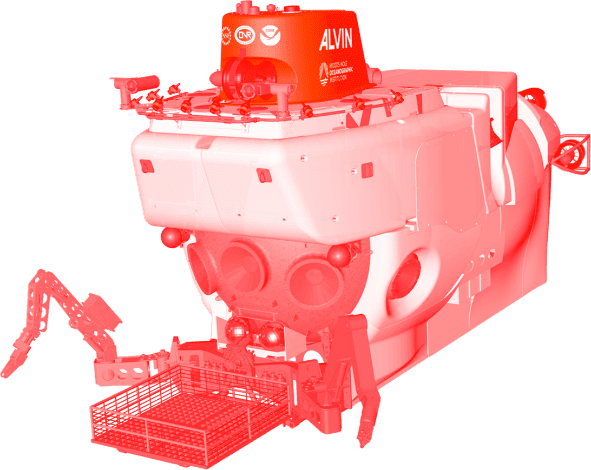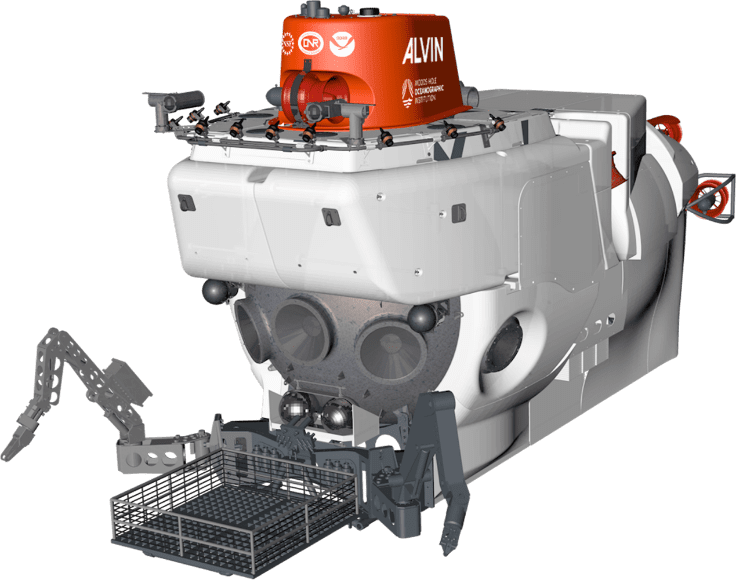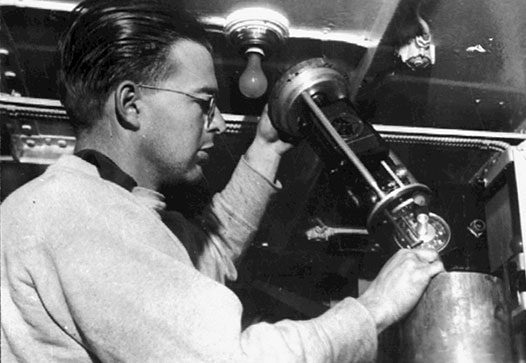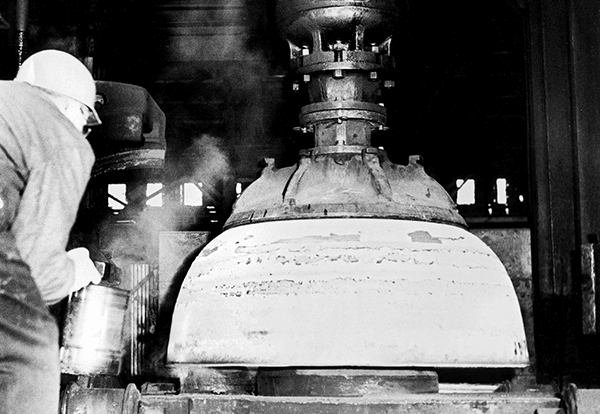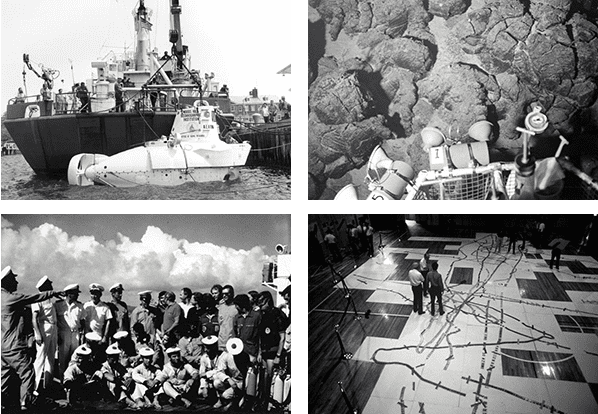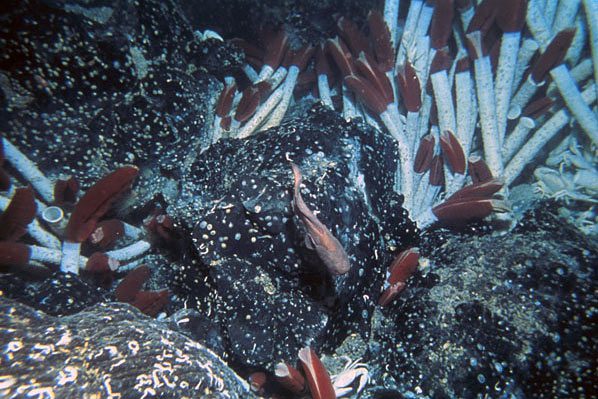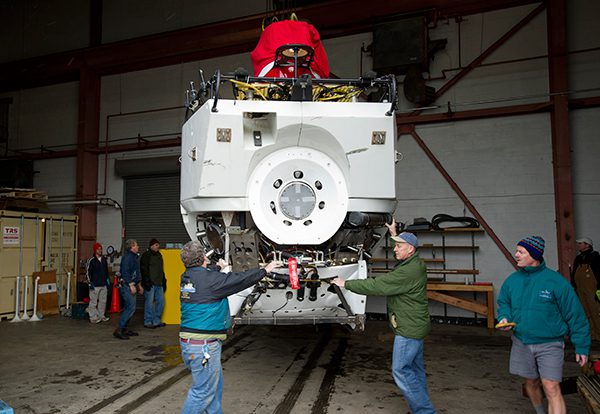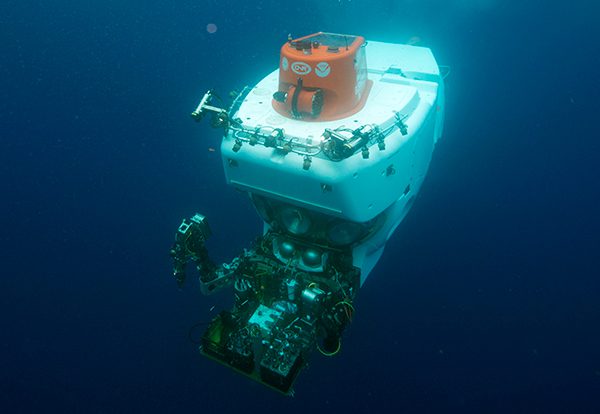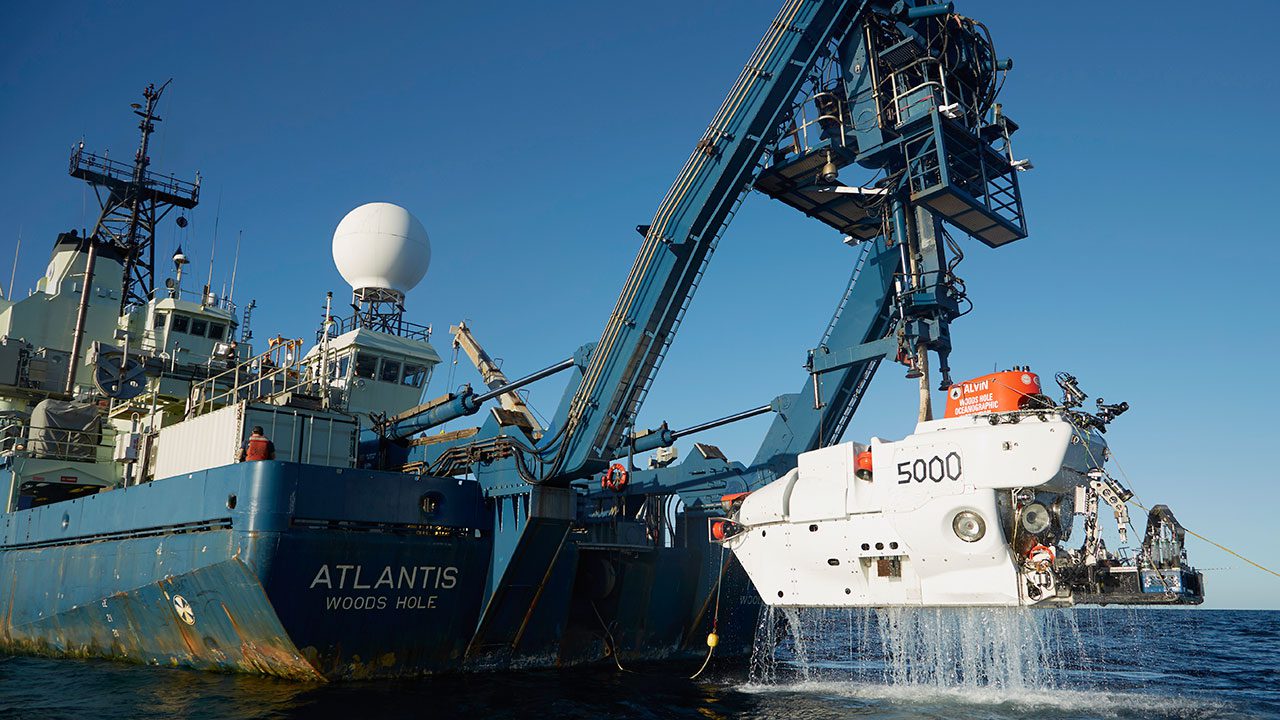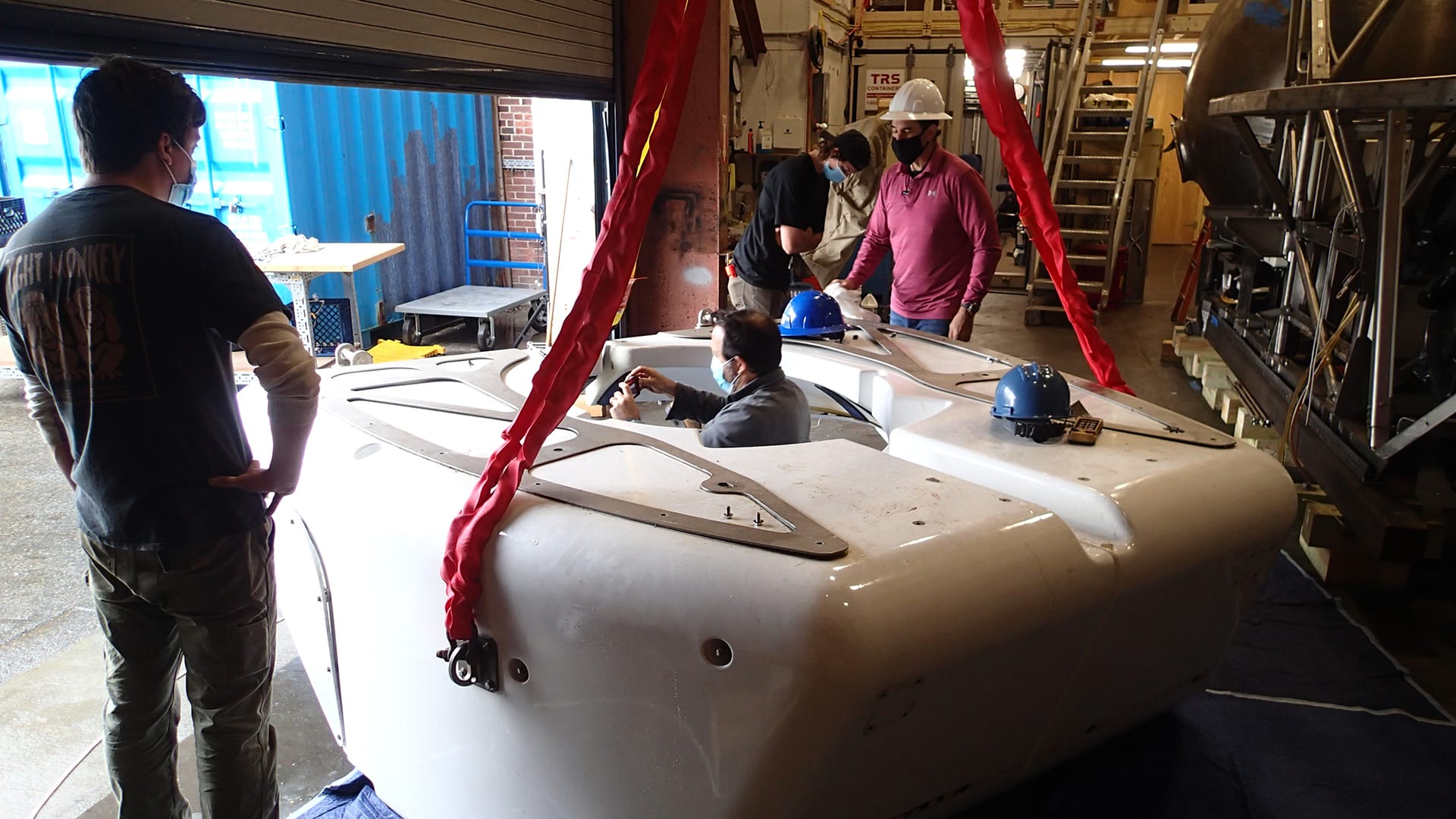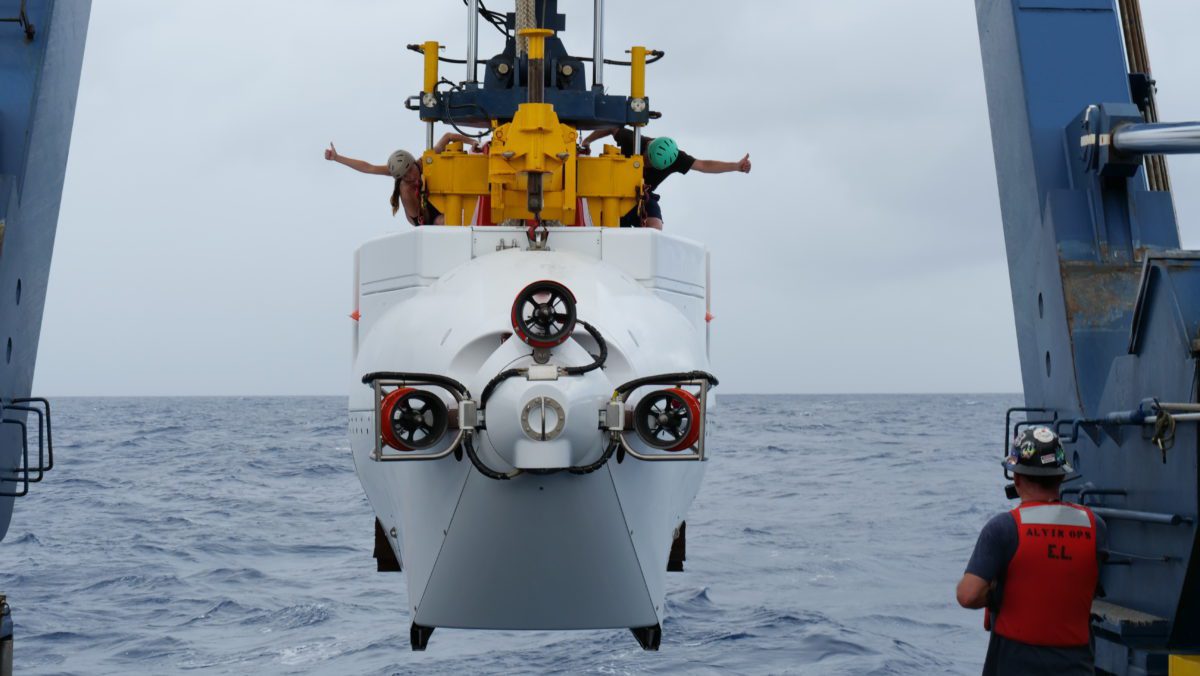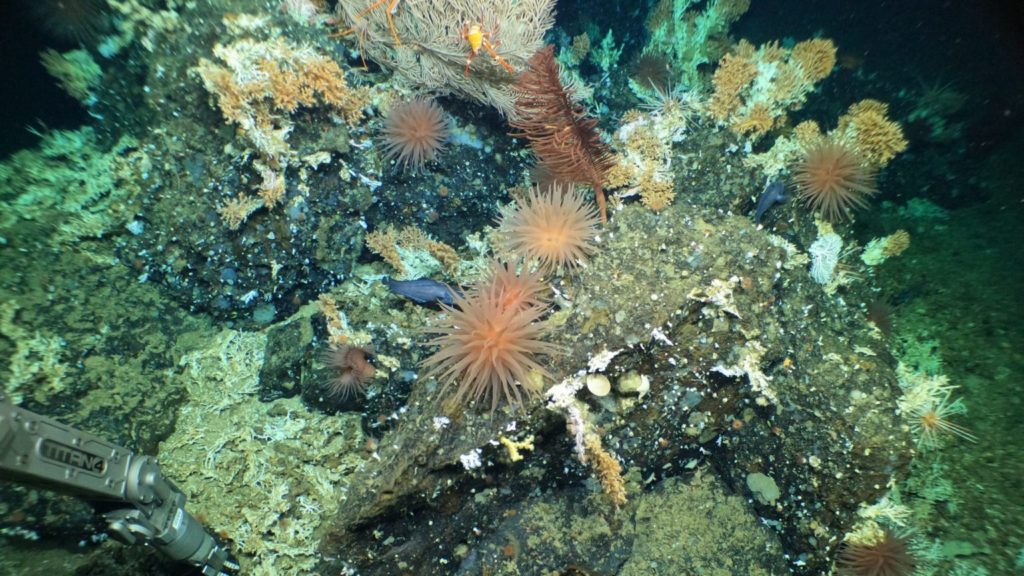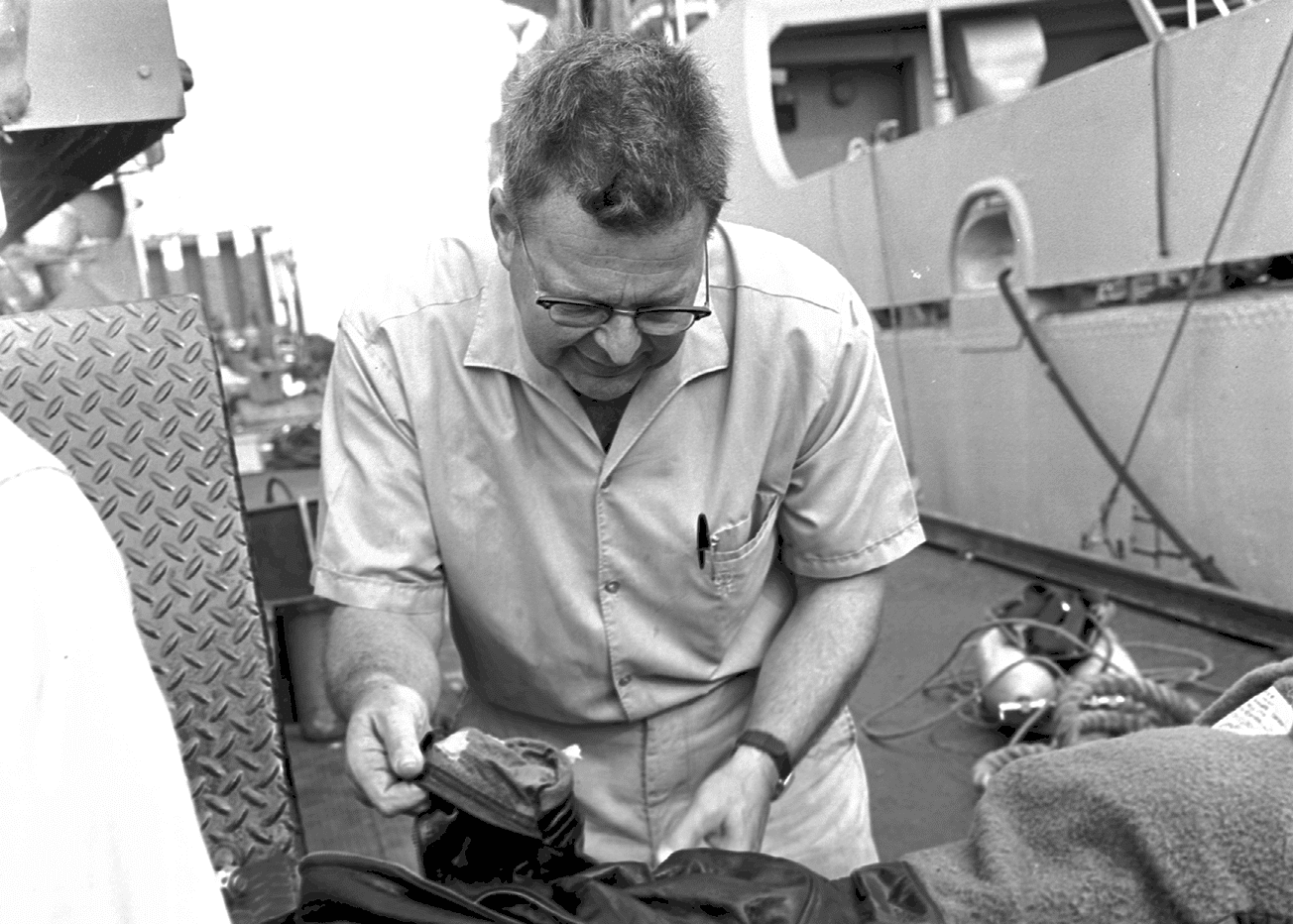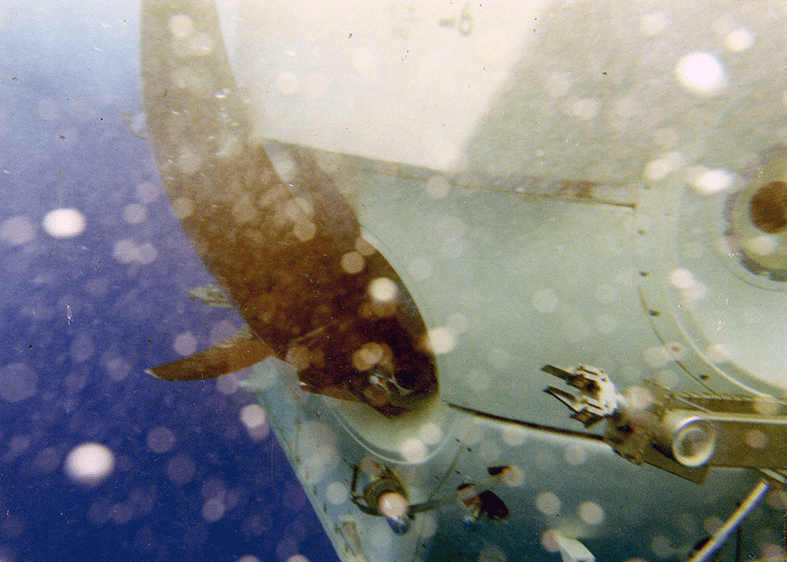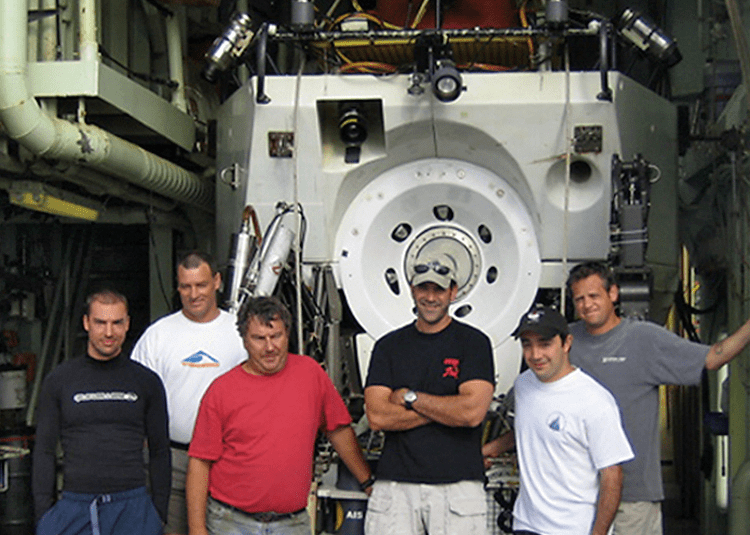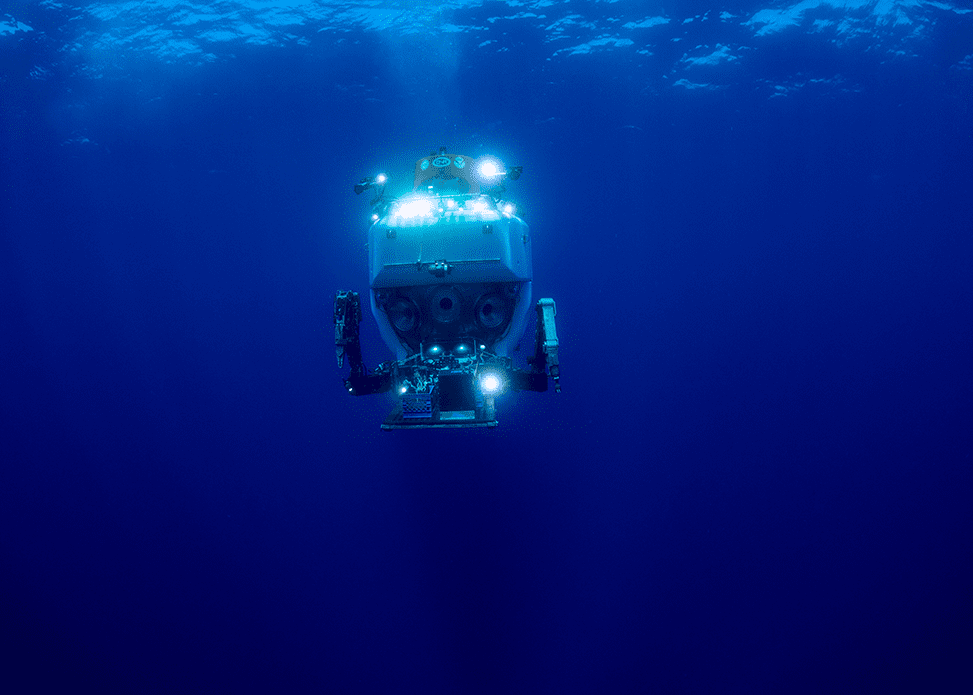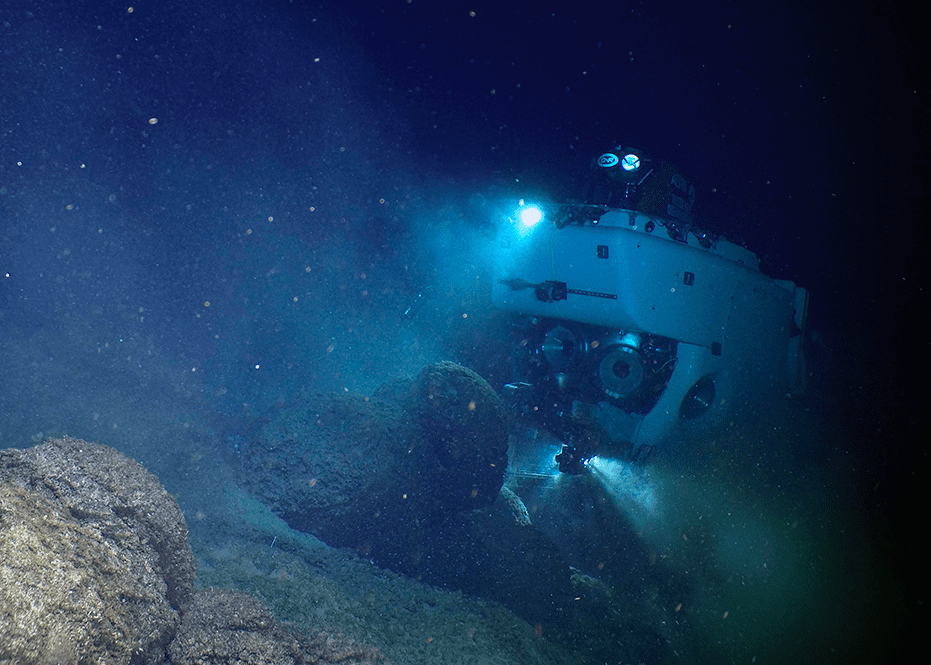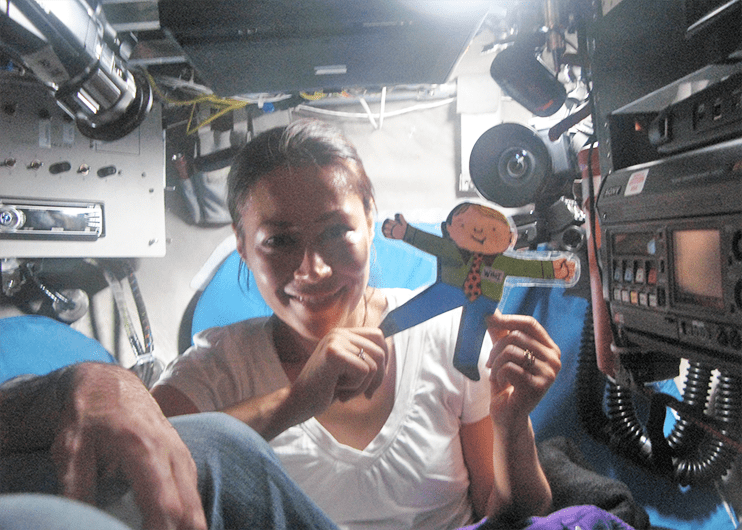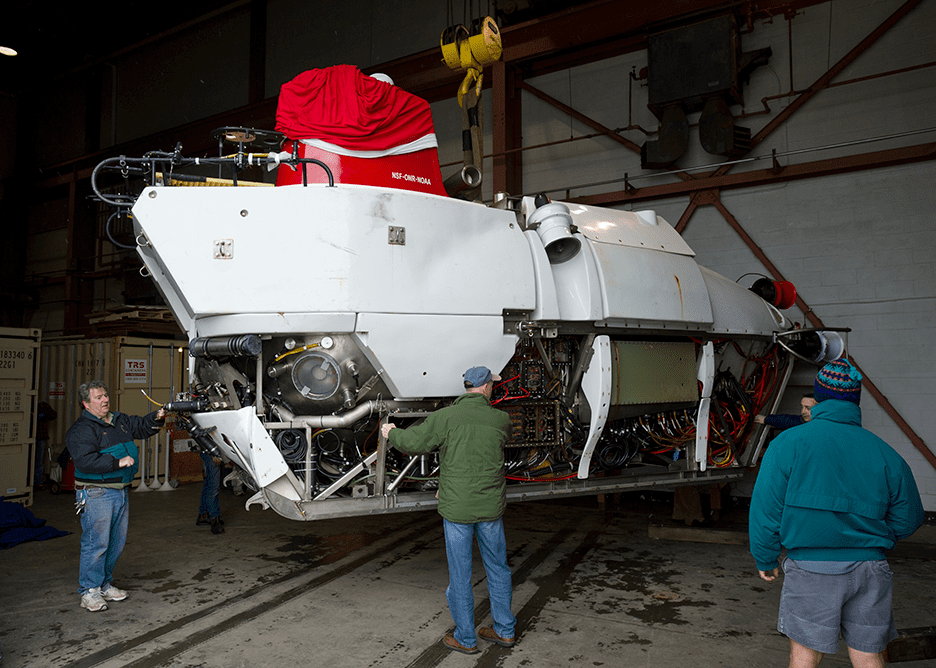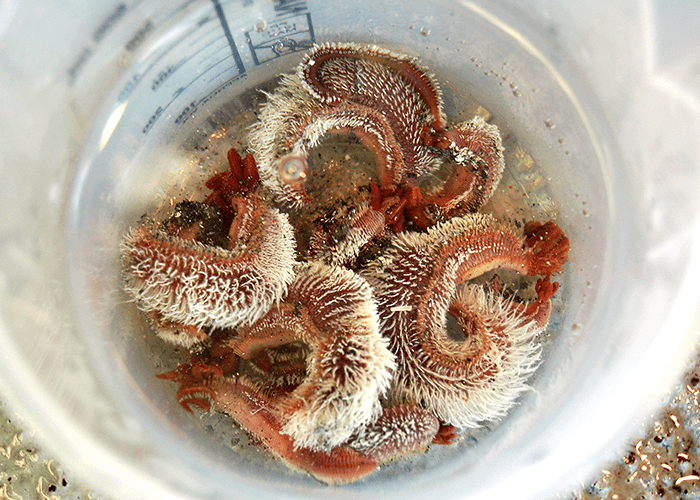Alvin60
Wish Alvin a
Happy Birthday!
Join us in commemorating Alvin’s 60th birthday by sharing a birthday message to Alvin on your social media channels with the hashtag #Alvin60. Posts on Instagram will also appear right here!
Milestones
Vehicle Tour
By the Numbers

5100+
DIVES
Equivalent to 1 dive a day for 14 years.
DIVES
Equivalent to 1 dive a day for 14 years.

6-10
HOUR DIVES
But the sub carries an additional 72 hours of reserve
HOUR DIVES
But the sub carries an additional 72 hours of reserve

20.4
METRIC TONS
(45,000 LBS)
The equivalent of a fully loaded school bus.
METRIC TONS
(45,000 LBS)
The equivalent of a fully loaded school bus.

7
METERS LONG
(23 ft)
The average length of an adult orca whale.
METERS LONG
(23 ft)
The average length of an adult orca whale.

680
KG PAYLOAD
(1,500 LBS)
Includes crew, ascent/descent weights, ballast, and science equipment and samples. That's like being able to carry an adult Holstein cow.
KG PAYLOAD
(1,500 LBS)
Includes crew, ascent/descent weights, ballast, and science equipment and samples. That's like being able to carry an adult Holstein cow.

3
CREW MEMBERS
One pilot and two scientific observers share the same 'cozy titanium sphere without a bathroom.
CREW MEMBERS
One pilot and two scientific observers share the same 'cozy titanium sphere without a bathroom.

3.7
METERS TALL
(12 ft)
The same as a fully grown African elephant.
METERS TALL
(12 ft)
The same as a fully grown African elephant.

6,500
METERS DEPTH
(21,325 ft)
It takes Alvin about 2.5 hours to descend to its maximum depth.
METERS DEPTH
(21,325 ft)
It takes Alvin about 2.5 hours to descend to its maximum depth.
Fun Facts
How did Alvin get its name?
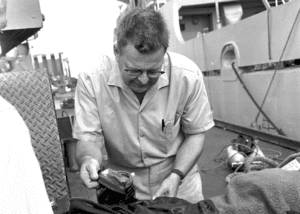
The submersible is named for Allyn Vine, a WHOI engineer and geophysicist who helped pioneer deep submergence research and technology. The sub's first support ship was named Lulu after Vine's mother.
Is there a bathroom in Alvin?

No. On a wall inside Alvin's support ship, Atlantis, there is a sign that reads "PB4UGO." Experienced divers urge newcomers to take the sign seriously. If there is an emergency, divers have to use a bottle.
What about marine life?
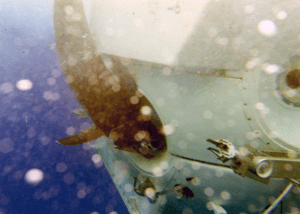
In 1967, an 8-foot, 196-pound swordfish lodged its bill into a joint on Alvin's hull during a dive off the east coast of Florida. Members of the Alvin team removed the swordfish with minimal damage to Alvin. The fish, however, was turned into steaks.
How many people have been Alvin pilots?
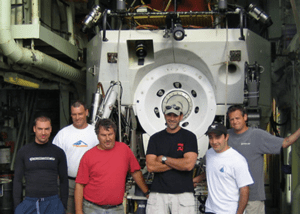
Since 1965, the job of driving Alvin has gone to just 45 men and one woman. Compare this to the 191 NASA pilots.
What is the temperature in Alvin?
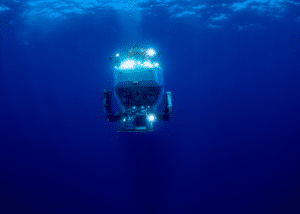
The average temperature outside the submersible is usually around 35°F. Inside the sub with all the electronics, and body heat and body heat from three passengers, it gets down to 45° to 50°F.
Has Alvin ever gotten stuck?
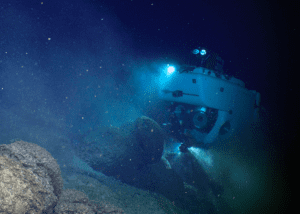
Yes. Once in 1975, Alvin drove into a fissure wider than the submersible. Before the pilot could tell that the fissure's walls were narrowing, the sub became wedged in the crack. Initial attempts to maneuver out failed. Finally, the pilot backed out, to the relief of Alvin's passengers and the ship's crew.
Has anyone famous ever traveled in Alvin?

Yes. Walter Cronkite (late broadcast journalist); Rita Colwell (former director of the U.S. National Science Foundation); William Broad (Pulitzer Prize-winning writer for The New York Times); Gary Comer (founder of the Lands' End clothing company); Ann Curry (television news journalist); Loral O'Hara (NASA Astronaut), Jim Toomey (author of the comic strip "Sherman's Lagoon").
How many pieces of Alvin remain from the original sub?
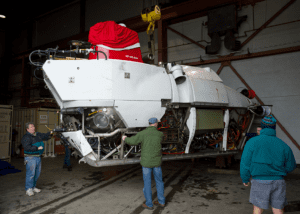
Only the name. The last physical pieces of the original sub were phased out during the last overhaul in 2013. The oldest pieces used today date from the 1980s: a portion of the titanium frame; one of the manipulator arms; and the aluminum ladder which scientists use to enter the sub.
What deep sea creature was named after Alvin?
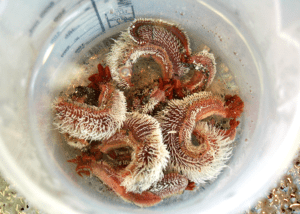
The Pompeii worm (Alvinella pompejana) is a furry worm with red tentacles that can withstand the hottest temperatures of any animal, even short periods at 130°F. Strickrott's hagfish (Eptatreus strickrott) and a new species of deep-sea worm (Pectinereis strickrotti) are both named after Alvin Pilot Bruce Strickrott.
Join Us
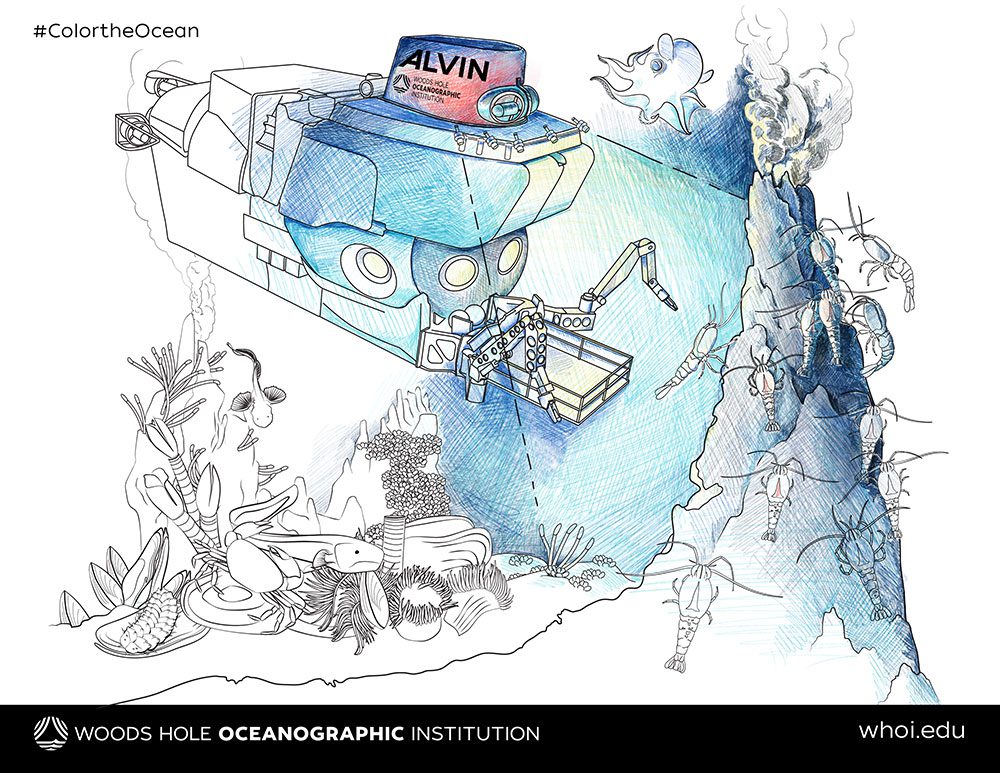
Sign up, stay in the know, and get a free coloring page!


